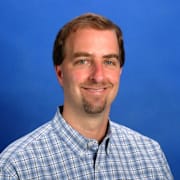Pebble Beach rolls out Game 1 of twin bill

Nine years ago, Dustin Johnson validated his arrival as a rising star on the PGA Tour by winning at Pebble Beach. He shot 64 in the first and third rounds, then held on to beat David Duval and J.B. Holmes by one stroke.
Nine years ago, Johnson also offered a window into the weaknesses in his game by losing at Pebble Beach. He imploded with a final-round 82, squandering a three-shot lead and watching Graeme McDowell hoist the trophy.
Johnson split the doubleheader, you might say.
We bring this up because Pebble Beach will host another doubleheader in 2019. This week, touring pros mostly will smile and chuckle – in the grand tradition of the late Bing Crosby – as they wander the Monterey Peninsula coastline, with amateurs in tow, for the AT&T Pebble Beach Pro-Am.
Then, in June, many of those same touring pros will grind their way around Pebble for the U.S. Open, golf’s most demanding and exasperating test.
This is a distinctive doubleheader, as Johnson discovered in 2010. He won his second consecutive AT&T that February, at age 25, showing off his eye-popping power and delicate touch around the greens.
Four months later, on the same course – well, with narrower fairways, thicker rough and faster greens – Johnson’s shortcomings were exposed. He struggled to manage his game amid the tough conditions, much as he did in subsequent major championships, until he finally broke through in the 2016 U.S. Open at Oakmont.
That’s why now, at 34, Johnson – even though he’s ranked No. 3 in the world, has spent 81 weeks in the top spot and won his first European Tour title on Sunday in Saudi Arabia – has only one major title to his name.
Doubleheaders like this are uncommon. Two years ago, when Quail Hollow in Charlotte hosted the PGA Championship, the club’s regular PGA Tour event (the Wells Fargo Championship) moved to Eagle Point in Wilmington, N.C.
But it has happened before, and not just in 2010. One clue: Tiger.
Nineteen years ago, young Tiger Woods swept the Pebble Beach twin bill. He trailed by five strokes entering the final round of the 2000 AT&T, before roaring back to shoot 64 and win by two over Matt Gogel. Woods posted a back-nine 31, highlighted by a hole-out from the fairway for eagle on No. 15. He finished eagle-birdie-par-birdie.
Then, four months later, Woods returned to Pebble Beach and demolished the field by 15 shots in the U.S. Open – the single-greatest performance in golf history, in my book.
Woods pulled off another sweep in 2008. He rolled to an eight-stroke victory in the then-named Buick Invitational at Torrey Pines in late January. Woods came back to Torrey in June and produced his epic U.S. Open triumph – to this day, his last major title – by outlasting Rocco Mediate in 91 holes (on a broken leg, we later came to know).
So, what to expect in this year’s Pebble Beach doubleheader? Woods won’t sweep, because he’s not playing this week. But many marquee players – including Johnson, Jason Day, Jordan Spieth, Phil Mickelson and Adam Scott – will get a look at Pebble four months ahead of the Open.
(Worth noting: Players are assured of only one tournament round at Pebble Beach, joined by Spyglass Hill and Monterey Peninsula’s Shore Course in the AT&T rotation. Those who make the 54-hole cut will play again at Pebble on Sunday.)
They will see a course on which USGA officials already have narrowed the fairways on several holes. They’re now about 30 yards wide in the landing area, compared with 45 yards for a typical AT&T.
The rough is the same as usual (about 2 inches deep), but it will be grown thicker and more punishing for the U.S. Open. And, naturally, the course will be much firmer in June, safely removed from winter rain.
Still, at least two players – Englishmen Tommy Fleetwood and Matthew Fitzpatrick – entered the AT&T for the first time specifically because they want a Pebble Beach preview in advance of June.
They’ll get a first-hand history lesson: Pebble might look tame on the scorecard (barely more than 6,800 yards for the AT&T, slightly more than 7,000 for the Open), but it provides a stout test in majors. McDowell won the 2010 U.S. Open at even par, and only one player finished below par in the 2000 Open.
And, as we all know, Woods really wasn’t human back then.
Ron Kroichick has covered golf for the San Francisco Chronicle since 2005. He also is a regular contributor to NCGA Golf, the Northern California Golf Association’s magazine. E-mail: r.kroichick@comcast.net; Twitter: @ronkroichick
